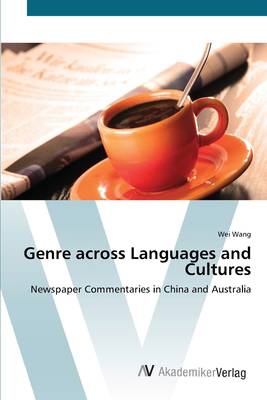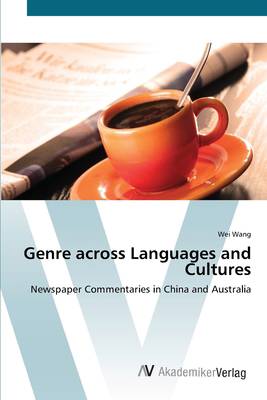
- Afhalen na 1 uur in een winkel met voorraad
- Gratis thuislevering in België vanaf € 30
- Ruim aanbod met 7 miljoen producten
- Afhalen na 1 uur in een winkel met voorraad
- Gratis thuislevering in België vanaf € 30
- Ruim aanbod met 7 miljoen producten
Genre across Languages and Cultures
Newspaper Commentaries in China and Australia
Wei Wang
Paperback | Engels
€ 64,67
+ 129 punten
Omschrijving
Revision with unchanged content. Traditional contrastive rhetoric research is often restricted to the tex-tual level of analysis. By providing both a textual and contextual view of genre across languages and cultures, this book presents a frame-work for contrastive rhetoric research which moves beyond the text into the context of production and interpretation of the text. The book examines the textual patterning of Australian and Chinese commen-taries and interpersonal and intertextual features of the texts, as well as considers possible contextual factors which might contribute to the formation of the newspaper commentaries in the two different languages and cultures. This analysis contributes towards answering the questions: How do writers in different languages and cultures position themselves in relation to the topics that they write about? How do they manipulate the topic and address their readers by the use of various linguistic strategies and devices? How do the roles of the press and opinion discourses mediate and influence constructions of the Chinese and English commentaries? How do discourses of terrorism in these two settings relate to textual and intertextual practices? The book is addressed to researchers in contrastive rhetoric and discourse research. It is also directed towards scholars in intercultural communi-cation and translation.
Specificaties
Betrokkenen
- Auteur(s):
- Uitgeverij:
Inhoud
- Aantal bladzijden:
- 200
- Taal:
- Engels
Eigenschappen
- Productcode (EAN):
- 9783639418477
- Verschijningsdatum:
- 27/05/2012
- Uitvoering:
- Paperback
- Formaat:
- Trade paperback (VS)
- Afmetingen:
- 152 mm x 229 mm
- Gewicht:
- 299 g

Alleen bij Standaard Boekhandel
+ 129 punten op je klantenkaart van Standaard Boekhandel
Beoordelingen
We publiceren alleen reviews die voldoen aan de voorwaarden voor reviews. Bekijk onze voorwaarden voor reviews.








